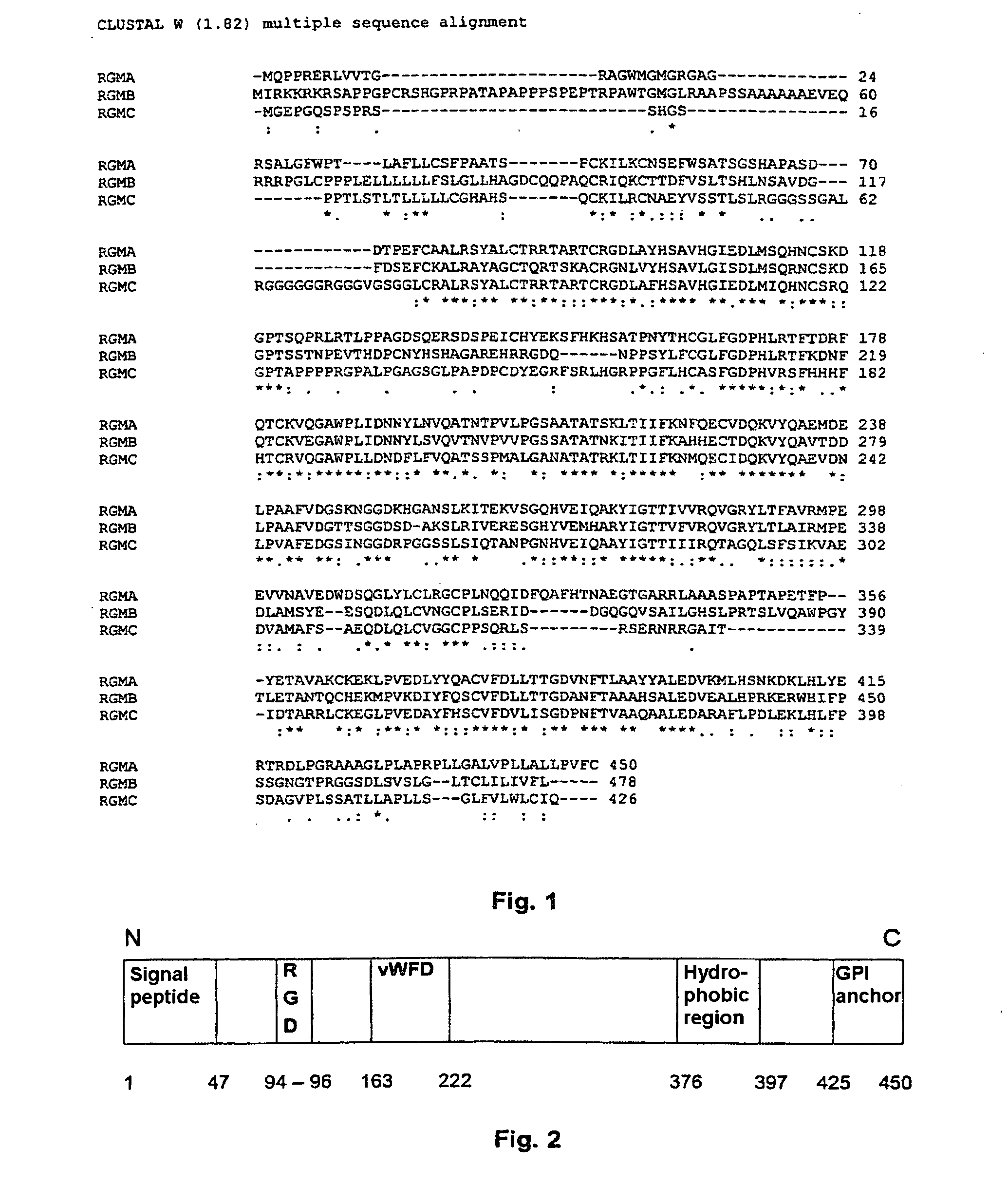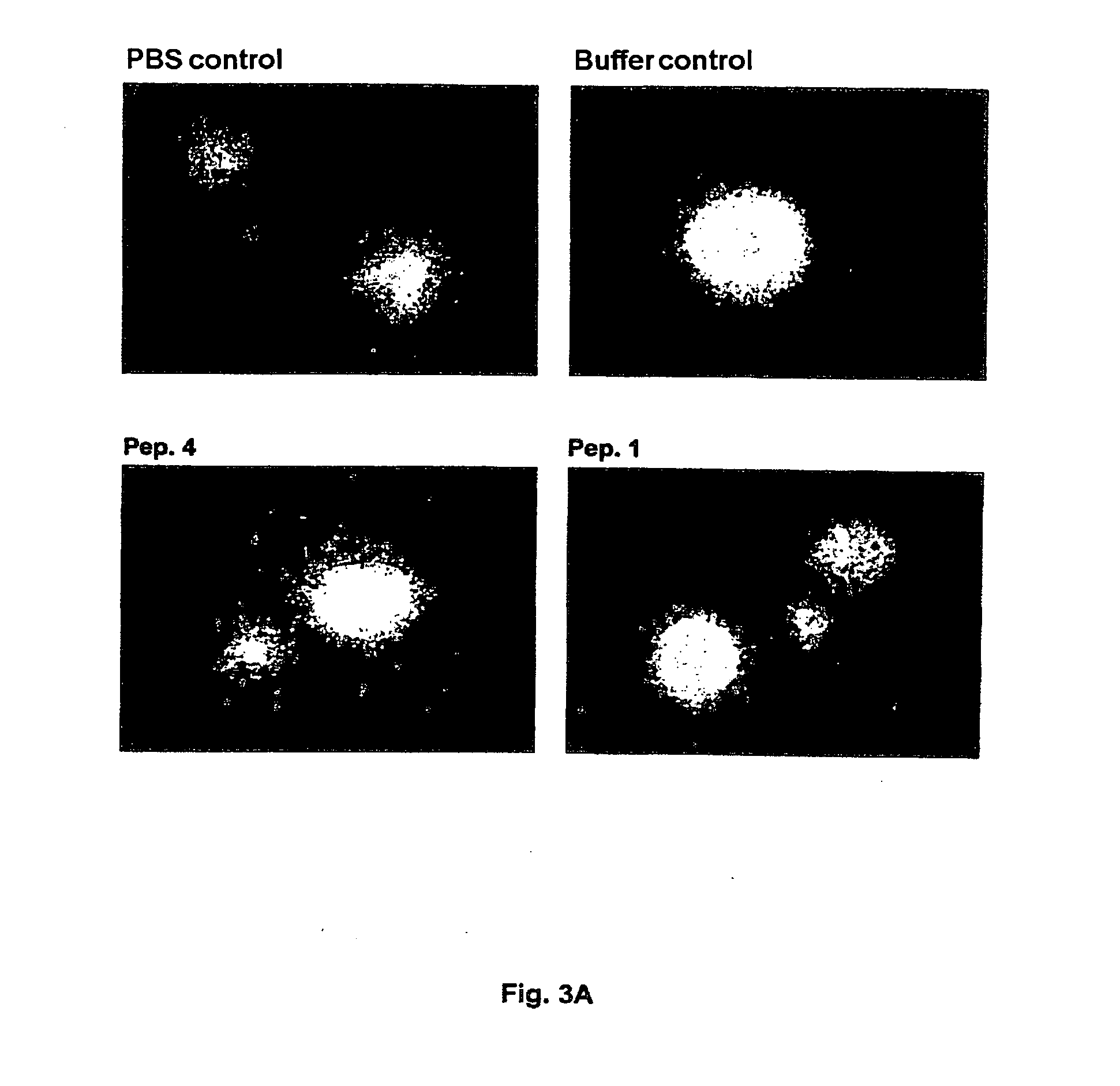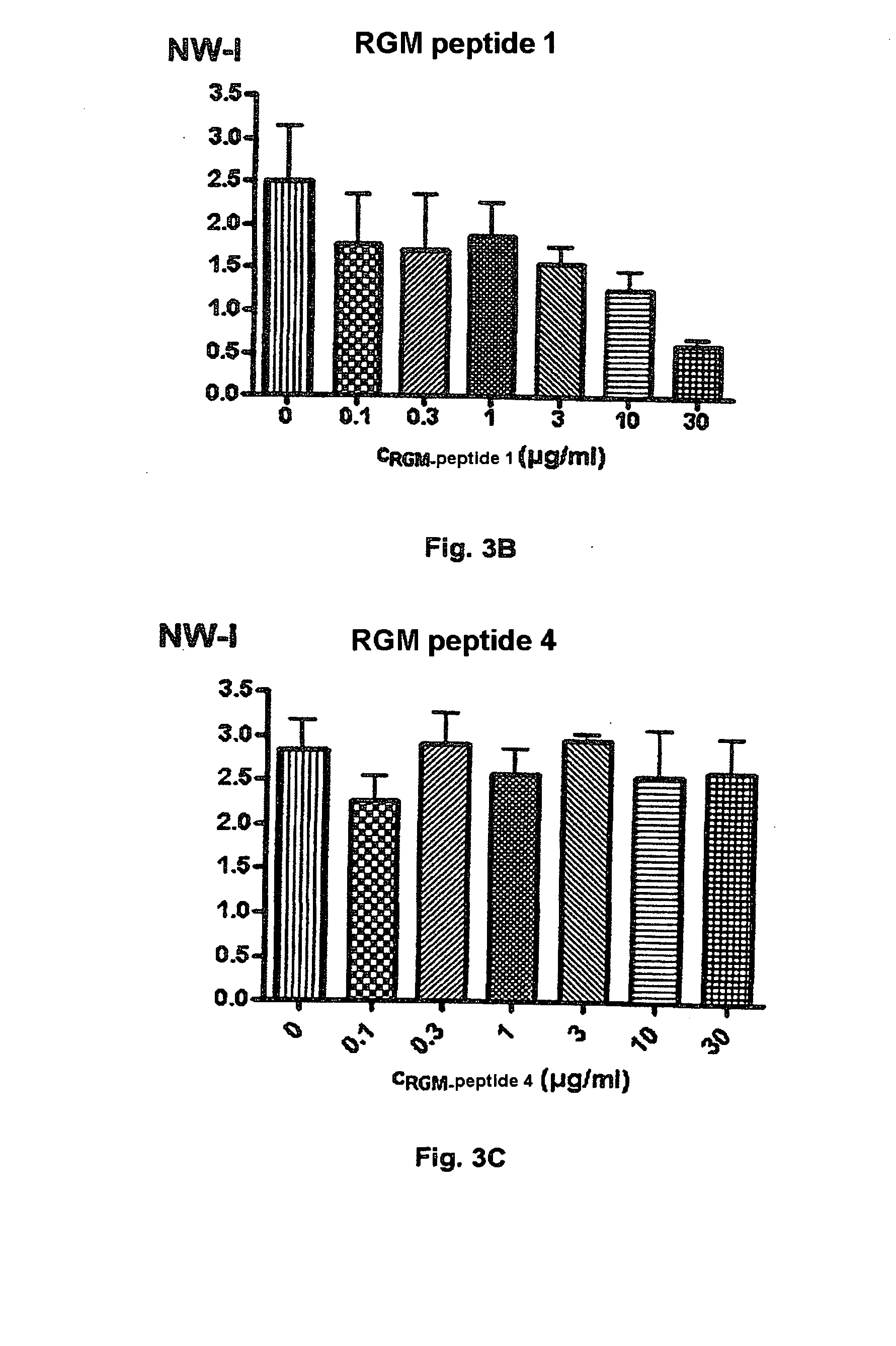Binding Domains of Proteins of the Repulsive Guidance Molecule (RGM) Protein Family and Functional Fragments Thereof, and Their Use
a technology of repulsive guidance molecule and protein family, which is applied in the direction of peptide/protein ingredients, depsipeptides, and vector-based foreign material introduction, etc., can solve the problems of inability to continue the growth of nerve fibers, retracting, and remaining inhibited by nerve fibers
- Summary
- Abstract
- Description
- Claims
- Application Information
AI Technical Summary
Problems solved by technology
Method used
Image
Examples
preparation examples
2. Preparation Examples
Preparation Example 1
Preparation of RGM a Protein Fragments in Mammalian Cells
[0262]To characterize the active RGM A domain in axon growth and neogenin binding assay methods, RGM A (AA 168-422) and RGM A fragments 70-80 AA in size (Frag. 1: 169-238; Frag. 2: 218-284; Frag. 3: 266-335; Frag. 4: 316-386; Frag. 5: 369-238; and Frag. 6: (168-422)) was expressed in mammalian cells (HEK293) as AP fusion proteins.
[0263]For this purpose, the DNA coding for the respective fragment was cloned into the vector pDEST AP / ccdb / Myc / His (Invitrogen, Gateway Vektor System) (AP—alkaline phosphatase; PPC—PreScisson protease). The DNA coding for the respective fragment region was for this purpose amplified by PCR from the RZPD clone (clone AL136826 (DKFZp434D0727); published RZPD sequence: BC015886, AL136826)). The following oligonucleotides were employed to do this:
Fragment 169-238:(SEQ ID NO: 11)GGGGACAAGTTTGTACAAAAAAGCAGGCTTTCTGGAAGTTCTGTTCCAGGGGCCCCCACACCTCAGGACTTTCACCGAC(SEQ ...
exemplary embodiment 1
Fragment Analysis with Neogenin-Expressing HEK293 Cells
a) General:
[0269]It was previously known that the active, growth-inhibiting activity of the RGM A protein from chickens is located in the region between amino acid position 150 and 350.
[0270]Fragments of the human RGM A protein which cover this range were therefore prepared. HEK293 cells which carry the RGM receptor endogenously on their surface were then transfected with these fragments in order to prepare clonal cell cultures which produce the individual protein fragments and release them into the culture medium. All the fragments were produced as fusion proteins with attached alkaline phosphatase enzyme. The presence of the active domain in these cells should make itself noticeable by: less cellular proliferation, increased cell death and / or altered cell-substrate adhesion.
[0271]Increased cell death and less proliferation have, of course, a direct effect on the produced amount of the active fragment. The amount of the produce...
exemplary embodiment 2
Investigation of Synthetic RGM a Peptides in the Nerve Fiber Growth Assay
[0281]For this purpose, the following RGM A peptides were synthesized and assayed in various concentrations in the nerve fiber growth assay described above (assay method 1 and assay method 2):
Peptide 1: AA 267-285
Peptide 2: AA 308-325
Peptide 3: AA 358-377
Peptide 4: AA 378-400
[0282](Numbering based on SEQ ID NO: 2)
[0283]Of the peptides assayed to date, peptide 1 reliably and reproducibly showed inhibitory activity. It can therefore be assumed that peptide 1 (AA 267-285) forms part of the active domain of the RGM protein.
[0284]The test results are depicted in FIGS. 3 A, B, C and 4 A, B.
[0285]FIG. 3A shows that, in contrast to peptide 4, peptide 1 significantly inhibits nerve fiber growth in a concentration of 10 μg / ml in tests with rat neuronal cells (assay method 1). FIG. 3B illustrates the effect of different concentrations (0 to 30 μg / ml) of peptide 1 on nerve fiber growth of cortical neurons. A significant in...
PUM
| Property | Measurement | Unit |
|---|---|---|
| Volume | aaaaa | aaaaa |
| Mass | aaaaa | aaaaa |
| Fraction | aaaaa | aaaaa |
Abstract
Description
Claims
Application Information
 Login to View More
Login to View More - R&D
- Intellectual Property
- Life Sciences
- Materials
- Tech Scout
- Unparalleled Data Quality
- Higher Quality Content
- 60% Fewer Hallucinations
Browse by: Latest US Patents, China's latest patents, Technical Efficacy Thesaurus, Application Domain, Technology Topic, Popular Technical Reports.
© 2025 PatSnap. All rights reserved.Legal|Privacy policy|Modern Slavery Act Transparency Statement|Sitemap|About US| Contact US: help@patsnap.com



